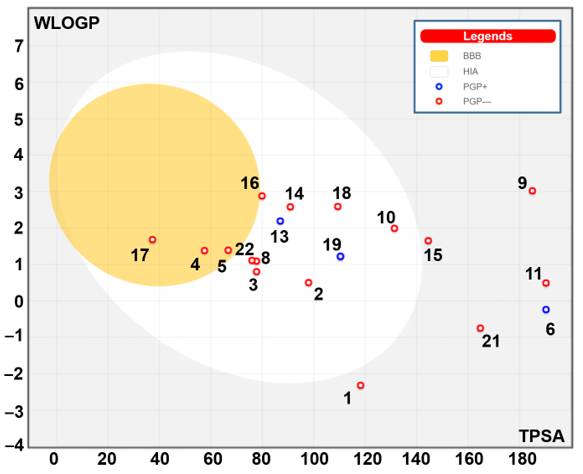Green synthesis of plant-derived ZnO nanoparticles: Characterization, pharmacokinetics, molecular interactions, and in-vitro antimicrobial and antifungal evaluation
DOI:
https://doi.org/10.17305/bb.2025.12090Keywords:
Antibacterial and antifungal activities, biosynthesis, nanotechnology, phytochemicals, zinc oxide nanoparticles, ZnONPs, computational modelingAbstract
Nowadays, nanoparticles (NPs) are used to counteract various medicinal and industrial problems. This study aimed to biosynthesize zinc oxide NPs (ZnONPs) from the plant species Aloe vera L., Peganum harmala L., Retama monosperma L., and Thymelaea hirsuta L. The biosynthesized ZnONPs were referred to as “Thymhirs.bio-ZnONP,” “Aloever.bio-ZnONP,” “Retam.bio-ZnONP,” and “Harm.bio-ZnONP.” A UV-visible spectrophotometer, granulometry, Fourier transform infrared spectroscopy, and electron paramagnetic resonance were used for physicochemical characterization. Pharmacokinetics and antimicrobial effects were explored using combined in vitro and computational assays. An abundance of phenolic acids and flavonoids was observed, particularly rutin, quinic acid, apigenin-7-O-glucoside, and cirsiliol, which may act as reducing, stabilizing, and capping agents in the biosynthesis. ZnONPs demonstrated strong antimicrobial activity against various bacterial, fungal, and yeast strains, highlighting their potential medicinal applications. This inhibitory activity can be attributed to the effect of the plant-based ZnO nanosized particles more than to the plant extracts or Zn salt. Computational modeling revealed that the identified phytochemicals (phenolic acids and flavonoids) bound Tyrosyl-tRNA Synthetase (TyrRS) from S. aureus (1JIJ), aspartic proteinase from C. albicans (2QZW), and wheat germ agglutinin (2UVO) with considerable affinities, which, together with molecular interactions and pharmacokinetics, satisfactorily support the in vitro antimicrobial findings. This study lays the groundwork for future research and pharmaceutical explorations aimed at harnessing the likely beneficial properties of green-synthesized ZnONPs for medicinal and therapeutic purposes, particularly their antimicrobial effects.
Citations
Downloads

Downloads
Additional Files
Published
Issue
Section
Categories
License
Copyright (c) 2025 Samira Jebahi, Riadh Badraoui, Ghada Ben Salah, Fadia Ben Taheur, Faten Brahmi, Mohsen Mhadhbi, Talel Bouhamda, Saoussen Jilani, Bandar Aloufi, Mohd Adnan, Arif J. Siddiqui, Abdel Moneim E. Sulieman, Ines Karmous

This work is licensed under a Creative Commons Attribution 4.0 International License.









